Editor’s note: This piece has been updated for 2023 to account for accuracy and modern CRO best practices.
You know that live chat is helpful for the customer experience on your eCommerce site — but does your live chat increase conversions?
We’ve noticed that many eCommerce companies hope that their live chats help to increase sales — but don’t actually know what their ROI from live chat is (or how to improve it).
In fact, we see a few common mistakes impacting the success of our clients’ live chat strategies:
- They have chat available only in case the customer needs to reach out, so it’s essentially an inbox.
- They don’t have a system that agents can follow to get more live chat sales.
- They don’t have an automated way to convert customers with a chatbot.
Or, in the possible worst-case scenario, they don’t have live chat implemented yet.
The good news? With a few techniques, you can proactively optimize your chat to create more online sales and drive more revenue for your site.
And, in this article, we’ll tell you how to make it happen.
Below, learn everything you need to know about eCommerce live chat, including:
- Which conversions your live chat should focus on
- How to increase your eCommerce live chat conversion rate
- And how to start your live chat strategy from scratch
Note: If you want our conversion experts to evaluate your chat implementation and strategy, reach out to us here.
Does Live Chat Increase eCommerce Conversions?
Over the last 15 years, we’ve been testing live chat eCommerce conversions for almost every client we work with — and we’ve found that, without a doubt, it can absolutely (and positively!) impact conversion rate.
And we’re not just talking product sales, either.
The conversions your brand tracks may vary, depending on what your online business sells. For physical products, you will track product sales, of course. However, you may also track conversions for email addresses. Service businesses may also track form fills and signups, along with sales and customer email addresses — all of which are types of conversions that can lead to a sale.
While live chat can seem complicated, and it can take a fair amount of work to implement a chat system correctly, it makes a big difference.
In one conservative analysis for a client selling specialty pen kits, we saw overall conversion rates lift by 3.84%, with a 6% overall lift in revenue, once we implemented live chat on their store in 2019.
But don’t just take it from us:
- Kayako reports that 79% of businesses say live chat has had a positive effect on sales, revenue, and customer loyalty.
- Intercom found that one reply in chat can increase the likelihood of conversion by 50% and that “a simple conversation with six exchanged messages makes a visitor 250% more likely to become a customer” (2018).
The takeaway here is: Yes, live chat does increase sales and other conversions. But the actual chat conversations don’t need to be that complicated, nor do they need to be long and time-consuming to get people to convert.
One caveat: Live chat, when set up improperly, can decrease conversions, too.
For example, if your chatbot just plain sucks — it unhelpful, it’s intrusive, or off-putting to potential customers for any other reason — this can reduce trust and contribute to a lower conversion rate for your online store.
20 Best Practices for eCommerce Live Chat
So, how do you ensure that your eCommerce live chat is set up in a way that improves your conversions?
Contrary to popular belief, online chat conversations don’t need to be that complicated, nor do they need to be long and time-consuming, to get people to convert.
As conversational marketing, this strategy is all about moving your online customers through the marketing funnel more quickly by building real-time relationships with them, turning browsing into a one-on-one shopping experience.
In other words, it’s all about tailoring the chat experience to increase satisfaction and conversions by engaging with, understanding, and recommending products to customers individually.
There are countless ways to tailor live chat for your business and your audience, 20 of which we’ve covered in our best practices below. You may employ all of them, but, where it makes sense to, you should certainly make some of them a part of your live chat optimization strategy.
Remember that conversion rate optimization relies on testing. Our recommendation? Take one tactic at a time and test it before moving on to the next.
1. Integrate your chat platform with Google Analytics to track your live chat conversions.
If you’re using live chat on your website to increase conversions, you’ll want to track your ROI to make sure the tool you’re paying for is worth its cost. Is your live chat helping to convert more website visitors into sales and increase revenue?
While you can manually tag conversions from chat in Google Analytics, many chat services (including Live Chat, Zendesk, and Olark) integrate easily with Google Analytics, allowing you to track live chat conversions alongside conversions from other sources.
We recommend segmenting your conversions between chats that fired proactively and chats that visitors initiated themselves to get a more nuanced view of these key metrics:
- For the overall conversion rate: Out of all the chats that occurred on your site, how many led to a conversion?
- For the conversion rate of proactive live chat: How many times did proactive chats fire? How many visitors engaged back? How many of them converted?
- For conversion rate of visitor-initiated chat: How many times did a visitor initiate chat themselves? How many of those people converted?
2. Analyze your live chat conversion data in detail.
In addition to tracking conversions, you’ll want to analyze the data from live chat more granularly to investigate how to increase your conversion rate.
Ask yourself the following questions:
- Which pages have the most chats initiated on them?
- What differences (if any) exist in how people use chat across different devices?
- How does chat perform on different marketing channels like SEO, PPC, email, etc.?
- Which marketing campaign is an individual chat attributed to?
- Which keywords and campaigns in Google ads are driving chats?
It’s also vital to optimize the chat conversations themselves. Ask yourself these questions:
- Is there anything said that made someone convert sooner?
- Did visitors leave without their needs being met?
- What is our agents’ average response time?
- Was there an opportunity to follow up with a coupon because you have the visitor’s email?
You can also monitor this data to see which live chat agents are closing the most sales through chat — and inviting them to share their processes with your marketing and sales team.
3. Tailor the chat flow to your business’s sales funnel.
eCommerce and service businesses often need a different approach to optimizing chat for conversions.
With eCommerce, creating automatic sequences can be a bit more difficult. Live human agents initiating the chat, rather than a bot, may convert better. Because every product tends to get different questions, customer inquiries will vary with the size of your product catalog.
In our experience, eCommerce stores with human chat agents who give quick responses to customers tend to have the most conversions.
Service businesses, on the other hand, often see a lower conversion rate when compared to eCommerce. There are typically more barriers to making a purchase, like a higher price, more custom options needed, or a longer path to a sale.
For example, an insurance company doesn’t usually get a purchase right away. Instead, they would measure their ROI from chat by looking at how many people are engaging with chat and then downloading and submitting insurance application forms.
That said, creating chat sequences can be more straightforward with service businesses, as customer questions tend to be more repetitive. For that reason, service businesses can see a bigger benefit than eCommerce to getting their chatbot scripts dialed into these common questions.
4. Tailor your language to how your audience speaks.
To make your chat truly conversational, any responses and interactions need to be authentic. Even if you have a standard script with greetings and common responses, write them in the way that you would actually speak to the customer.
The actual tone you use is going to depend on your business’s brand and customer demographics.
For example, a cosmetics brand geared toward young women in their 20s might greet a visitor with, “Hey there! Did you want to know more about our products?” while a high-end oven range brand might start with, “Hello Chef, did you have any questions about cooking with us?”
Regardless of the business, live chat agents need a professional demeanor, so good grammar and a pleasant overall tone are important.
5. Use pre-written responses.
As you get your chat system set up, collect pre-written responses to increase answer speed by your agents.
In most live chat software, you’ll find a dropdown for canned responses to use in the message window:
Along the way, take note of any particularly good customer reactions to your chats. When a customer gushes or expresses a positive emotion (e.g. “Oh my gosh! Thank you so much for your help. You’re the best!”), you’ll know you said something right.
Add these messages to an ongoing list that you can use as saved responses for agents or as part of a chatbot’s script.
6. Use a pre-chat questionnaire.
If you need to collect contact information or other details from customers, test having a pre-chat form to collect it. That way, your agents will have the information they need and be able to jump right in to help the customer.
The best practice here is to integrate that information into your CRM system — such as Drift or HubSpot — so that you can continue adding to your customer profiles. Collecting data from chats gives you information like customer names and locations/timezones, which allows you to further personalize your messages with them and improve their experience.
Addressing your customers by name and being able to wish them “good morning” based on their time zone are small touches that can help make customers more comfortable and receptive to your team.
7. Integrate chat with email for retargeting campaigns.
You can (and should) also integrate chat with your email marketing. The easiest way to do this is to add an email opt-in box to your pre-chat survey (even if that survey is simply their name and email address).
Here’s an example:
Avocado Mattress has programmed its chatbot to collect visitor emails or phone numbers when its staff isn’t immediately available. While it’s obviously better to be available immediately, this gives its team a chance to follow up with customers later.
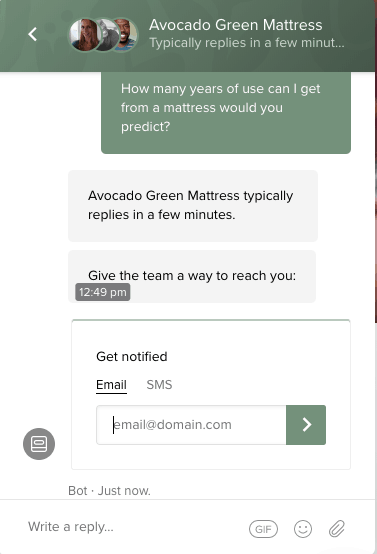
You can also import the data from your CRM into an email system like ActiveCampaign or Mailchimp. Then, you can use that data to segment customers and send them more relevant emails, improving their open rate.
By offering a simple coupon in exchange for an email at the end of the chat, you can incentivize email opt-ins and remarket those visitors who didn’t convert the first time.
8. Use a post-chat survey to collect audience feedback.
In addition to a pre-chat survey, you can offer a post-chat survey to make sure visitors received the help they needed and that they were satisfied.
While some people won’t fill out the survey, you can get more responses by having a simple five-star chat rating system, which reduces obstacles and friction for customers.
Any feedback is useful for tailoring your chat and leaving customers more satisfied. After all, satisfied customers convert.
9. Optimize your live chat location and look.
As we mentioned above, live chat CRO is not a one-size-fits-all practice. Depending on your business and audience, your chat will take shape differently in terms of its placement and content.
It starts with how chat is part of your website’s UI: How does a visitor first notice your chat, and does seeing the chat make them feel irritated or supported?
We’ve seen websites where live chat gets triggered within seconds of a visitor landing on the page — sometimes using a loud ding, bright colors, and a vibrating or shaking pop-up to get their attention. This “look at me!” approach to chat may backfire by reducing the trust of irritated visitors. It can be even worse when coupled with pushy sales messages.
Instead, make sure your chat is visible and easy to find but not in a distracting way.
An icon in the lower right corner using a contrasting color will work for most websites.
10. Test chat on mobile.
We can’t understate how important it is to test your chat on mobile. Smaller screens make everything harder, whether it’s clicking around the website, looking at product images, or going through checkout. It also makes interacting with chat a bit more cumbersome for customers.
In 2022, desktop conversion rates in the U.S. came in at 3%, with mobile conversion rates right behind at 2%.

To take advantage of these shoppers, always test your chat on mobile to ensure it’s visible and easy to use.
11. Make chat available on every page to discover where customers use it.
Which pages should you put your live chat on?
Simple: All of them!
Some sites will bury the link to chat in their footer or leave it available only on the “Contact” page. We recommend making chat available on every page so it’s there when visitors need it.
If you see that customer engagement is happening more frequently on certain pages, while other pages barely ever see any engagement, you can then start to pare chat back accordingly.
12. Make chat available 24/7.
Customers expect an automatic and quick response these days, even after business hours.
But it’s better not to display chat at all rather than show this:

If you’re offline, you should still give customers an option to submit their messages. Of course, let them know when an agent will respond.
Better yet, outsource chat agents from a service like HelpSquad or Moneypenny when your own is not available. Just as you may outsource agents for inbound calls that come in after hours, you can do the same with chat agents!
13. Help several customers simultaneously to allow for different conversion paces.
The nice thing about chat is that you can handle several conversations at once time if any one visitor is slow to respond.
Different customers will often chat at different speeds for a number of reasons, such as being distracted from multitasking or having a slower internet connection.
Instead of pestering these customers with follow-up chat messages, it’s best to let them set their own conversion pace. While you’re waiting, you can engage with multiple customers, increasing the efficiency of your chat team and giving your customers the time they need to respond.
14. Make chat relevant to the page it lives on.
Personalizing chat to customers’ behavior has been a running theme in this article — and for good reason. You can make chat more relevant from the very first message by tailoring it to the page a customer contacts you from.
When possible, we like to use chat to encourage visitors to go through deeper levels of the site. You can ask customers on category pages, “Are you finding the products you’re looking for?” Then, you can direct them to the product that got them on the site in the first place.
An eCommerce store might ask customers on category pages if they need help deciding between products, such as different backyard playset models. If a customer is already on an individual playset’s product page, ask if they have any questions about that particular playset.
A travel agency selling excursions might ask visitors what country they are interested in visiting while they’re on a category page of vacation packages. Based on their answers, your chat team should guide them to the product page of their ideal vacation.
15. Test and use the right chat trigger.
Remember, we’re tailoring your live chat to your business and customers — so the way it gets triggered should depend on that context.
In general, dwell time is the simplest and most solid proactive trigger. If a visitor lingers on any one page, they’re either looking closely because they are interested — or they’re on another tab because they’re not.
In either case, triggering chat after a certain dwell time lets customers know you’re available for help if they need it. Often, the chat notification will bring a distracted user back to your tab if they’ve gone somewhere else.
Start by testing a trigger at a certain time frame (say, after 45 seconds). Based on your customer rate of response, you can then decide whether to trigger your chat window earlier or later.
While you can leave chat for visitors to initiate, proactive chat triggering has tested better across our eCommerce clients. Initiating chat can indicate that you provide an above-average customer service experience, and some visitors will engage better as a result.
16. Save conversations to avoid redundancy.
Sometimes, it can take multiple visits and multiple chat sessions to create a conversion as a customer considers their purchase. So, don’t frustrate your customer by repeating what they’ve already learned!
Make sure your chat platform saves conversations from visitors and displays where you left off to agents the next time the visitor returns.
The same principle applies when using a chatbot, although it may be harder to execute. In this case, be more open-ended with your greetings — for example, “Welcome back! Did you need my help with anything?”
17. Give your agents support with a well-defined process.
To provide the best customer service, make sure you establish a sales process for agents, along with a support process for when they don’t know how to answer a customer’s question.
Consider creating an internal FAQ for agents. You’re already collecting common customer questions and effective responses, so document all of those in one knowledge base as a resource for your chat support team.
If an agent still can’t solve a customer’s need, develop a process of who and where to go next. If someone else isn’t available to help, following up with the customer through email may be the best option.
18. Upsell and cross-sell to increase average order value.
Similar to the “People Also Buy” product recommendations on eCommerce web pages, test upsell and cross-sell offerings via chat before customers checkout. Doing so can make a big impact.
For example, one of our camera equipment clients will offer lenses to people who add camera bodies to their cart. A proactive chat agent or chatbot would notice that the customer added a $10,000 camera body but no glass lenses to their package, and ask them, “Want to look at compatible lenses?”
Like with all conversion rate optimization strategies, make sure to test placement and phrasing to identify which tactics work best for your audience.
The video below is hosted on YouTube. If you need assistance with viewing the video, please contact info@goinflow.com.
19. Catch dissatisfied chatters before they leave a bad review.
Despite your best efforts, there will always be customers who leave your chat frustrated or dissatisfied. But, before they leave a negative review or write an irate email, give them reasons to reconsider, such as a discount or refund.
We highly recommend leaving angry customers to live agents, not chatbots. If you rely on a chatbot, have the bot ask whether a customer is satisfied — and punt that conversation to a live help desk if not.
Agents should always be sensitive with their responses and focus on addressing customer fears and concerns. In certain circumstances, you may have to help the customer over the phone, so make sure that’s also an option for your team.
20. Use a chatbot to save on costs and increase your chat efficiency.
Despite all the downsides of chatbots, we still find them incredibly useful for eCommerce clients. Not only do they save on support costs for your internal teams, but they also help streamline the sales funnel a visitor goes through.
That said, a chatbot is only as good as the customer research and programming that goes into it. Make sure to program your system based on your unique customer data, and use it to anticipate the best responses to increase the chances of conversion.
For example, we know that visitors to our service and industry pages are often actively looking for eCommerce marketing solutions. We know they may have questions about hiring us after landing on our site, so we’ve programmed our bot to ask visitors for business details and contact information.
That way, our sales team can follow up later with personalized emails and offers.
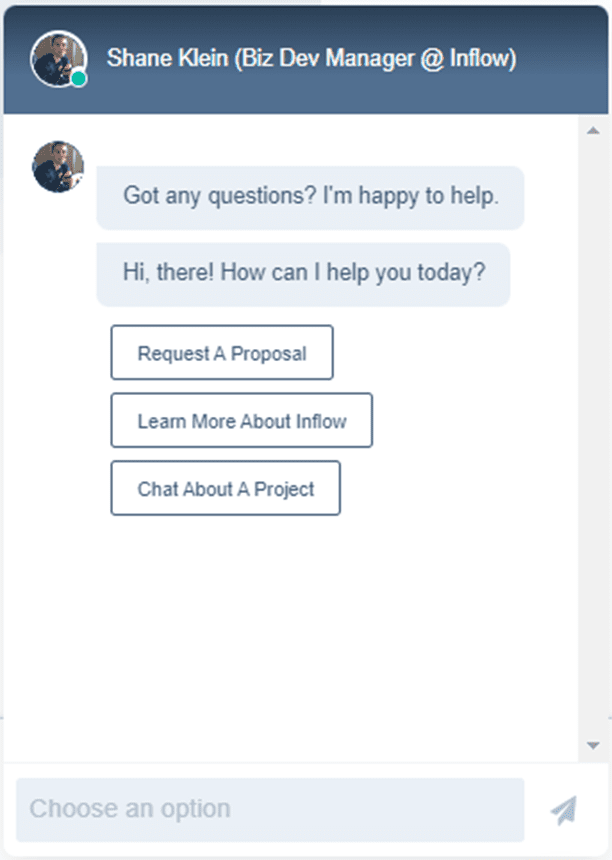
Whether or not they convert on the spot, this chatbot works on its own accord to encourage a relationship that can lead to additional business.
Chatbots vs. Live Customer Support Agents
While we’re headed toward a world where customers interact with chatbots more than humans, many eCommerce businesses today will benefit by doing a hybrid option.
For common customer needs or to get a conversation started, chatbots are great. When things need a bit more personal attention, humans are irreplaceable.
Our recommendation: Start with a robot to see what the customer’s need is, and then punt the conversation to a human who can fully meet that need.
Setting up a chatbot involves making a brain tree (also called a “decision tree”) — essentially an “If/Then” logical sequence to create chatbot conversations. Inevitably, when you make your brain tree, there will be certain moments detected by the chatbot — such as a dissatisfied customer or multiple complex questions — that results in a switch to a live agent.
Increasing conversions with chatbots can also tie in with remarketing. You may be able to integrate your live chat widgets through Facebook Messenger, or you can use a messenger bot like Recart’s to integrate with Shopify or Woocommerce.
Both of these options allow you to message your customers on Facebook and remind them to complete their purchase after they’ve abandoned their cart.
How to Get Started With Chatbots
Relying on chatbots alone is rarely the best option. But, for businesses with a smaller staff and smaller budgets, it can be the best option for increasing conversions at a lower customer support cost.
Before you implement a chatbot on your eCommerce site, follow these steps to create your strategy.
Step 1: Decide if you really need a chatbot.
First, ask yourself and your team if there is an actual need to implement a chatbot on your site.
Is there something that customer service reps do repeatedly — like answering common questions or completing help requests — that you could automate to take that burden off of their shoulders?
Make a list of these repetitive questions, topics, and pain points. Compare the cost of addressing those through live agents with automating it through a chatbot subscription service.
Step 2: Think about how you’ll apply it to your site.
Do you have the personnel infrastructure to write up your chatbot scripts and configure them on your site?
We recommend dedicating one team member to not only set up your live chatbot but also to continually analyze, refine, and improve your chat sequence and strategy. This way, your chatbot strategy lightens the load for the rest of your team, rather than creating more work for everyone.
Step 3: Model your chatbot around FAQs.
The path of least resistance is by reviewing any commonly asked questions from your customers and using those as your starting point.
Logically order the questions in terms of which comes up first in conversation. Look at your site FAQ (if you have one) or ask your customer service reps to keep track of common questions that come in.
Start to model the chat around that data.
Step 4: Refine and improve your chat sequence.
Don’t just set up your chatbot and leave it to run indefinitely. Over time, as you receive more questions from customers, you’ll need to refine your chat sequence to be even more useful. This will include adding, removing, and optimizing triggers and scripts based on what works best for your customers.
Step 5: Get to know your audience and make strategic improvements.
Creating a conversational marketing system takes time, and it’s an art in that it’s specific to each site and audience. Different audiences respond to different chat scenarios. For example, an older demographic might not want to talk to a chatbot at all.
Modifying, monitoring, retaining, and making sure people are engaged is what makes your chat tip-top. The biggest ROI from chat will come over time as your satisfied customer base grows and returns to your business repeatedly.
In other words, to see real success with your eCommerce live chatbot, you need to have a long-term plan and investment.
Conclusion
This list of conversion optimization best practices for live chat isn’t exhaustive, but, from our experience working with hundreds of eCommerce, it is what tends to work in increasing customer satisfaction, conversion rates, and revenue.
While setting up a live chat system might seem overwhelming, it doesn’t have to be. Yes, you’ll need to follow some important principles — but, in essence, it’s all about testing and refining over time to make your chat perfect for your unique business and customer journey.
If you do get chat dialed in, you’ll find that the path to purchase is a bit easier for the customers who use it.
Want to get started with live chat or apply some of these best practices to convert more visitors? We’d love to help.
Our conversion rate optimization experts will not only make sure that your live chat is converting at its peak but also ensure that your entire eCommerce operation is optimized to generate the most revenue possible. Request a free proposal today to get started.
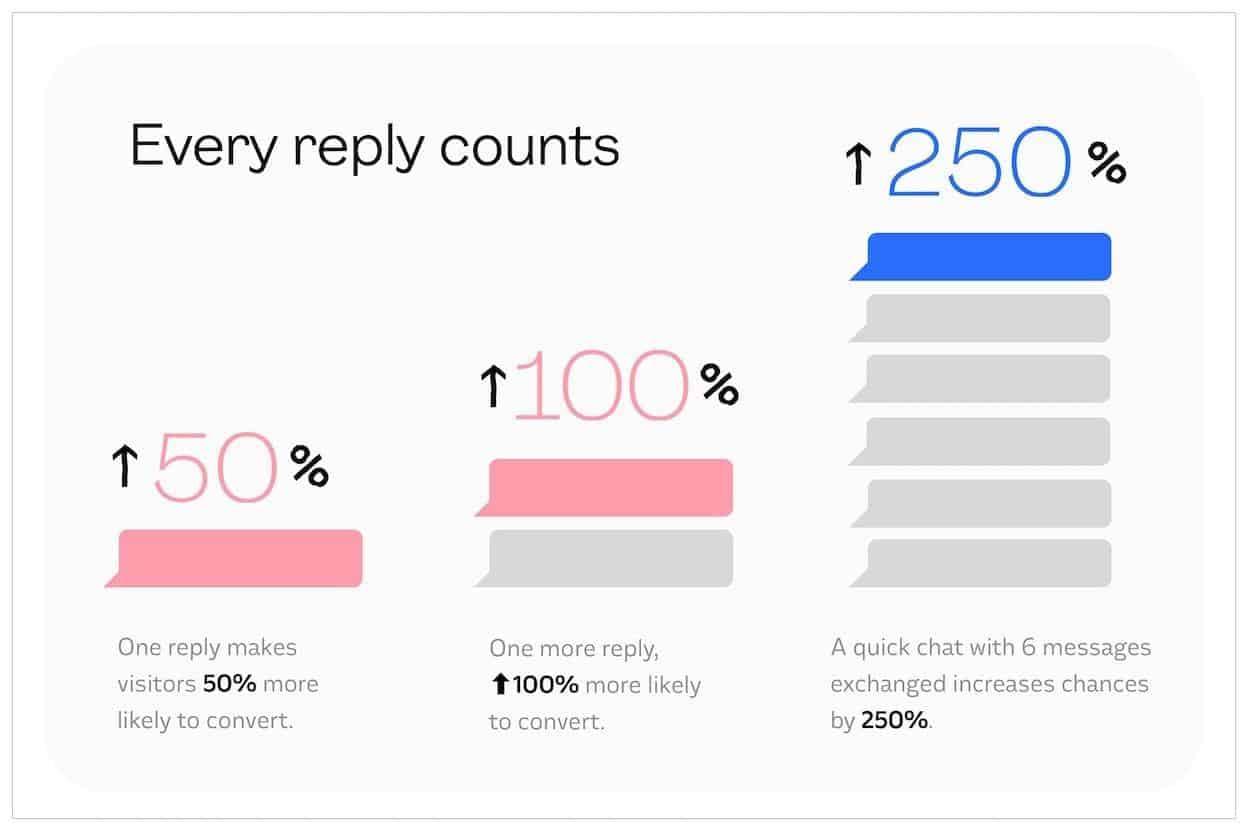
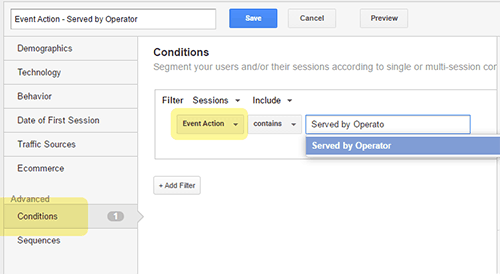
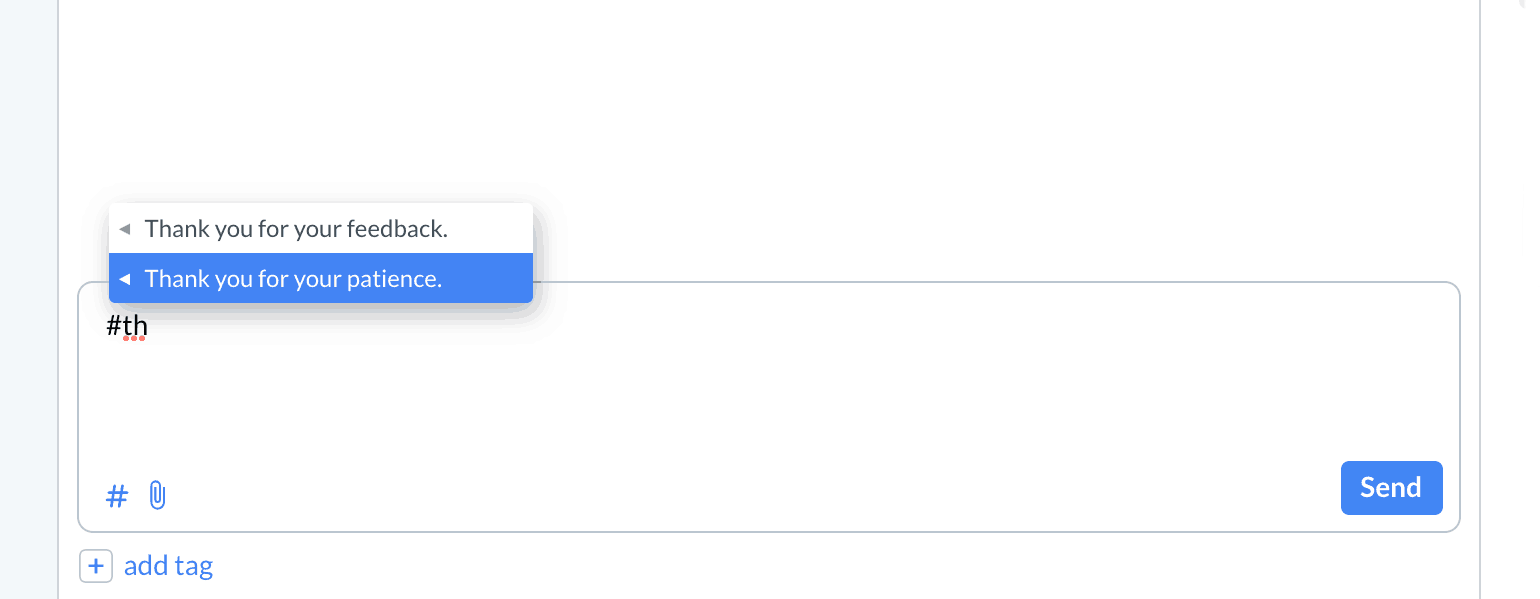









0 Comments